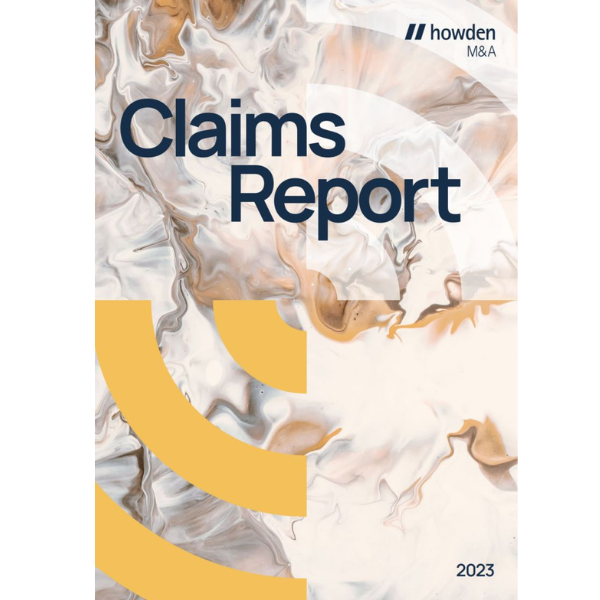5 things to note in APAC Mergers & Acquisitions for Q2 2023
Published
Read time
As we move into Q2, we are seeing a marked increase in deal enquiries and submissions, a welcome change from the slower start to 2023.
Howden M&A has one of the largest dedicated M&A claims teams of any broker, whose primary purpose is to assist our clients in making claims and then getting these claims paid as swiftly and smoothly as possible. Our 2023 M&A Claims Report analyses our global claims statistics to positively show that M&A insurance products do work. Here are the top 5 highlights that we hope will be of use to dealmakers and advisors in our region.
1. Most common breaches
The most common breach events in operational deals now relate to (i) financial statements (31%) and (ii) compliance with laws (18%). Financial statement breaches are relatively easy to identify post-close. If the statements either overstate profit or understate a liability, loss can be quantified and claimed. Different accounting reporting standards for APAC entities in different jurisdictions can lead to DD mistakes or irregularities. Compliance with laws is a particularly important area for clients looking at targets that operate in multiple APAC jurisdictions. The warranty “the Target Group has complied with all laws in the relevant jurisdictions in which it operates” is an important catch-all. We always resist this warranty being knowledge qualified and accept a materiality qualifier only where necessary. The prevalence of breaches of this warranty should put buyer deal teams on notice to resist amendments and fight for fulsome drafting.
2. When do policyholders claim?
Our latest stats show that over half of all policy notifications are made within the first 18 months and 15% of all claims are made within the first 6 months. Some clients will ask if they can fully commit to the insurance process post-completion and get the policy signed at a future date. Our advice is always to avoid this and get the policy in place at signing and, if absolutely necessary, in the gap between signing and completion. As a reminder, the policy is designed to cover “unknown risks”. If after signing but before finalisation of the policy, the buyer’s deal team is made aware that a warranty has been breached, this would preclude the buyer from bringing a claim in respect of that breach, a worst case scenario. We also note that post-signing, momentum to finalise the policy slows and, despite best intentions, the often intended one week turns into 3 – 4 weeks which erodes valuable coverage time. Policyholders typically claim early, hence parties should always have their insurance policy in order and ready for inception at signing.
3. When will I get paid?
Clients regularly ask us how long the claims process takes and, more importantly, when can they expect to receive their money. Our stats show that on average Insurers agree payment within 10 months of a notification being lodged, with 40% of claims paid in 6 months or less. The timescale for settlement of claims naturally depends on (i) the speed at which the insured evidences a claim (both the breach and the quantum of loss); and (ii) the speed at which the notification is assessed. A complex claim with a high quantum will naturally require an insurer to spend some time evaluating and understanding the issues. Clients should be prepared for insurers to ask for additional information to allow them to assess the claim, a procedure the Howden claims team will give you guidance on early in the process. There is no downside risk to making a notification and policyholders will quite reasonably make a notification even when the possibility of a loss caused by a warranty breach is not yet confirmed.
4. Particular caution for the education, financial services and healthcare sectors
Complexity is one of the key drivers of claims notification rates across asset classes and sectors. Highly regulated sectors all saw increases in claims in 2022. In part, this was due to an increase in the number of deals insured in these sectors through the 2021 period; however, with the continuing demand for deals in these industries in APAC, we expect to see claims volumes remain consistently high. A recent example of a claim which resulted in paid loss was, for a target operating a consumer bill platform, the seller had failed to disclose a third party liability following the termination of a contract, with no corresponding accrual being made in the accounts. Side letters to contracts/incomplete reporting regularly result in notifications. Clients looking at assets in these sectors (especially on multi-jurisdictional transactions where group entities can be subject to differing governing laws and reporting standards) should be mindful of the frequency of policy claims that we are experiencing.
5. Deal size matters
Large M&A deals are naturally more complex and more is at stake, hence unsurprisingly, the notification rate for large transactions is significantly higher than for lower/mid-market transactions. A number of the insurers we work with are restricted from offering insurance on deals valued at over USD1bn for this very reason. Advisors working on large multi-jurisdictional deals across APAC should be mindful of the prevalence of claims and ensure that discussions on the use of insurance happen at an early stage with their client. Structuring insurance for USD1bn+ transactions takes slightly longer than for lower/mid-market deals and the number of underwriters that have the ability to properly understand and evaluate such companies is limited.
Authored by:
James Kay |
Goh Tze Yang |

Download our 2023 M&A Claims Report
The report utilises our in-house data to identify M&A insurance notification trends from the last 12 to 18 months and to forecast what the remainder of this year might hold.

